Types of Hoisting Equipment in Construction: The hoisting is the lifting of the material against gravity and maybe done with a wide range of equipment from the small hand-operated simple screw or hydraulic-jack to modern high powered cranes and elevators. Hoisting is lifting a weight from one location and moving it to another location which is at a reasonable distance.
Big projects such as the construction of dams, industrial buildings, etc. require hoisting equipment.
Hoisting equipment includes jacks, winches, chain hoists, and cranes.
Crane is the only single machine which, as a single piece, is capable of providing three- dimensional movement of the weight.

Hoisting equipment in construction
Types of Hoisting Equipment in Construction: The common equipment used are as follows
- Pulley and sheave block
- Chain hoists
- Mobile cranes
- Winch
- Jack
- Shear leg
- Tower cranes
- Whirler cranes
- Derrick cranes
- Gantry cranes
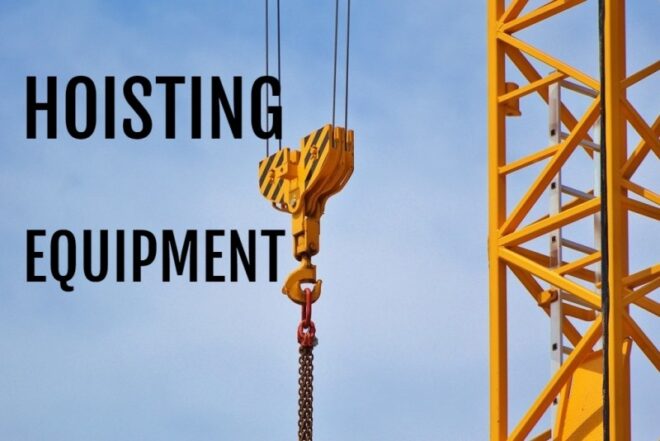
Movable pulley
A pulley is a wheel on an axle or shaft that is designed to support movement and change of direction of a cable or belt along its circumference. Pulleys are used in a variety of ways to lift loads, apply forces, and to transmit power. In nautical contexts, the assembly of the wheel, axle, and supporting shell is referred to as a “block.”
A pulley may also be called a sheave or drum and may have a groove between two flanges around its circumference. The drive element of a pulley system can be a rope, cable, belt, or chain that runs over the pulley inside the groove.
Rope and pulley
The pulley and sheave blocks suitable for lifting rough surfaces and heavy loads. For this purpose, the chains and wire ropes are used. The alloy chains are best suited for hoisting operation. The weakest component of this system is the load hook. The hook fails by straightening. Once the hook gets elongated or straightened, it should be replaced. A typical sheave and pulley block is shown in fig.
Chain hoist
The chain hoists are the popular mechanism for lifting loads of upto tones. The system consists of two sets of chains, namely the hand and load chain. The hand chains are particularly useful for the isolated location, where an electric motor or other types of mechanical equipments are not available. The pull applied through the hand chain is transmitted to the load chain with a multiplication factor of over 20.
The load to be lifted is held by a load hook while another hook(called support hook) at the top, support the mechanism. The two hooks, however, should not be interchanged as the support hook is made much stronger than the load hook. There are four types of hand-operated chain hoists are in use:
- Differential
- Screw geared
- Spur geared
- Pull lift

Mobile crane
Mobile crane is used in big construction projects for lifting heavy loads. It is used for loading and unloading for material in coal mines. Loading and unloading of ships. To take the load from ground level and place it into the trucks.
Electric winch
A winch is a mechanism in the shape of a cylinder or drum, over which rope or chain is wound. If a winch is used only for raising and lowering, it is sometimes referred to as hoist. The winches are of two types:
- hand winches
- power winches

Tower crane
These are the crane of swing job type and are mounted on high steel towers. The height of the tower maybe 25 to 30 m and these cranes are found to be suitable in the construction of tall buildings in congested areas. The ground area required for such cranes is very small.
This crane is a combination of stationary and mobile units. This combines the advantages of a log boom of derrick crane and mobility of the mobile crane. The rotating structure has an outer framework. The boom is attached to the front end of this framework. The counterweight is provided at the rear end. On the diagonally opposite corners of the base, two separate motors are provided, which give movement to the central shaft
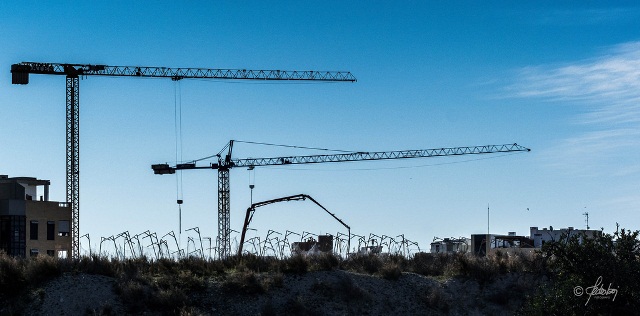
Derrick crane
The derrick cranes are of two types, namely:
- Guy derrick and
- Stiff leg derrick
The guy derrick consists of a vertical mast. This mast is supported by the number of guys and can revolve through 360°. While revolving, the radius of revolution should be such that the revolving structure is not obstructed by the guy wires. The power is supplied by a diesel engine or by an electric motor.
A typical derrick crane is illustrated in fig. This derrick can be constructed up to 200 tonnes capacity. In stiff leg type derricks, the guy wires are replaced by trussed structure. This type of derricks is suitable for loads from 10 to 50 tonnes.
Overhead gantry crane
The Gantry cranes or overhead cranes are the indispensable machines in factories and workshops. In large workshops, there are separate machines for fabrications or repairs of the machine parts. The machine or the components, which are to be repaired, can be transferred to the place of fabrication or assembly with the help of Gantry cranes.
Hoisting equipment assists in the lifting and positioning of large, heavy loads in a variety of industries, including:
- Automotive
- Chemicals
- Commercial printing
- Manufacturing
- Newspaper
- Paper
- Steel
- Warehousing and distribution
Hoisting equipment provides a variety of benefits:
- Customizable – Hoisting equipment can be customized with below the hook attachments, end effectors or specialized tooling to handle a diverse variety of products and loads
- Ergonomics – By doing the heavy lifting, hoisting equipment takes the strain off operators, reducing fatigue and lowering the risk of injury
- Flexible – Hoisting equipment can be easily re-fitted for longer lifting capability
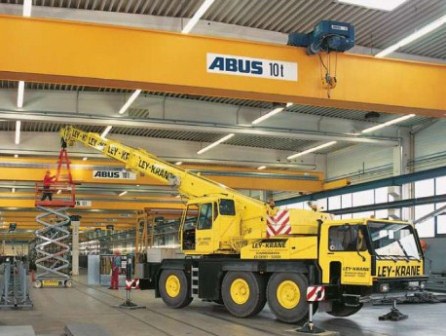
what is the meaning of hoist?
To hoist is to raise up or lift as a crane or forklift would. You can hoist yourself up onto the roof to get a better view or hoist your teammate onto your shoulders after she scores the winning goal.
This word is generally used to describe heavier lifting, like the hoisting of a fallen tree onto the bed of a truck or hoisting the Super Bowl trophy over your head after the big game. In nautical terms, where it comes up often, hoist refers to a group of flags that are raised all at once to communicate a signal.
What is the synonym of a hoist? boost, crane, elevate, heave, heft, heighten, hike, jack (up), lift, perk (up), pick up, raise, take up, up, uphold, uplift, upraise. Words Related to hoist. ascend, mount, rise.
Types of Hoisting Equipment in Construction
A hoist is a device used for lifting or lowering a load by means of a drum or lift-wheel around which rope or chain wraps. It may be manually operated, electrically or pneumatically driven and may use chain, fiber or wire rope as its lifting medium.
Lifting equipment is any work equipment for lifting and lowering loads and includes any accessories used in doing so (such as attachments to support, fix or anchor the equipment). Examples of lifting equipment include overhead cranes and their supporting runways.
Rigging is a process used to secure materials to be moved by cranes, hoists or other lifting equipment. There are many factors to consider when applying slings and chains to secure a load.
a hoist is simply a machine that is used for the lifting and lowering of heavy loads. A hook or lug can be used to permanently mount a hoist in one location, or affix it to a trolley. A trolley is a vehicle that travels on an overhead rail or beam, normally used to move the hoist and it’s load from place to place.
As verbs the difference between lift and hoist is that lift is (intransitive) to raise or rise while hoist is to raise; to lift; to elevate; especially, to raise or lift to a desired elevation, by means of tackle or pulley, as a sail, a flag, a heavy package or weight.
A hoist is a device used for lifting or lowering a load by means of a drum or lift-wheel around which rope or chain wraps. It may be manually operated, electrically or pneumatically driven and may use chain, fiber or wire rope as its lifting medium.
How does a chain fall work? A Chain Block (also known as a hand chain hoist) is a mechanism used to lift and lower heavy loads using a chain. Chain blocks contain two wheels in which the chain is wound around. When the chain is pulled, it winds around the wheels and begins to lift the item that is attached to the rope or chain via a hook.
The most read

Electric Hoist Manufacturers
You’ll hear opinions about leading chain hoists brand names like Yale, Gorbel, Budget, Coffing, and Harrington.
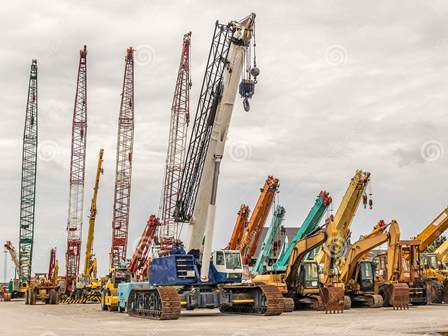
Types of Hoisting Equipment
The hoisting is the lifting of the material against gravity and maybe done with a wide range of equipment from the small hand-operated simple screw.
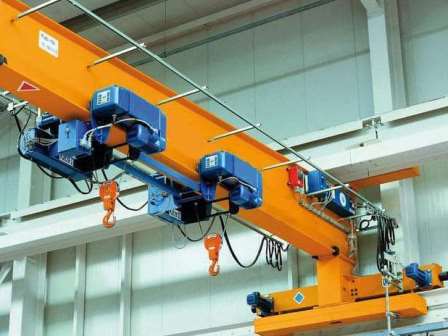
Hoist Mechanism
The mechanism used to raise and lower heavy loads to the desired height with comparatively little effort is called a lifting mechanism.
